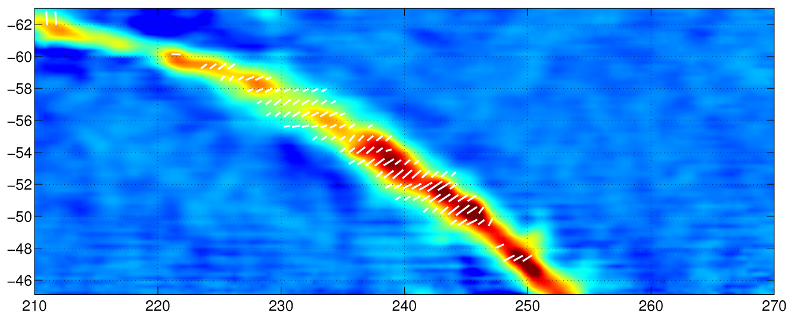|
BICEP2
|
|

"First light" map of temperature and polarization of the Milky Way Galaxy from BICEP2, February 2010.
17Mar2014: Detection of B-mode Polarization at Degree Scales with BICEP2
The primary goal of BICEP2 is to measure the polarization of the cosmic microwave background (CMB). The CMB is a nearly perfect, uniform black body at 2.7 K, with degree-scale temperature anisotropy of about 0.1 mK and polarization on the order of microkelvin. This radiation was emitted 380,000 years after the Big Bang, at the time of recombination, when the Universe first became transparent to light. The temperature anisotropy and polarization of the CMB are some of the most powerful ways of understanding the early Universe. Cosmologists believe the Universe experienced a rapid period of cosmic inflation during its first fraction of a second, exponentially expanding from a dense, hot subatomic volume. Many models of inflation predict that this rapid acceleration would have generated gravitational waves that would remain energetic enough 380,000 years later to leave an imprint on the CMB. BICEP2 is searching for this imprint by measuring the pure-curl component of the CMB polarization on degree angular scales, which is largely free of contamination from sources other than primordial gravitational waves.
|
This information is from an article written by Walt Ogburn. Read more from this article here. |
|